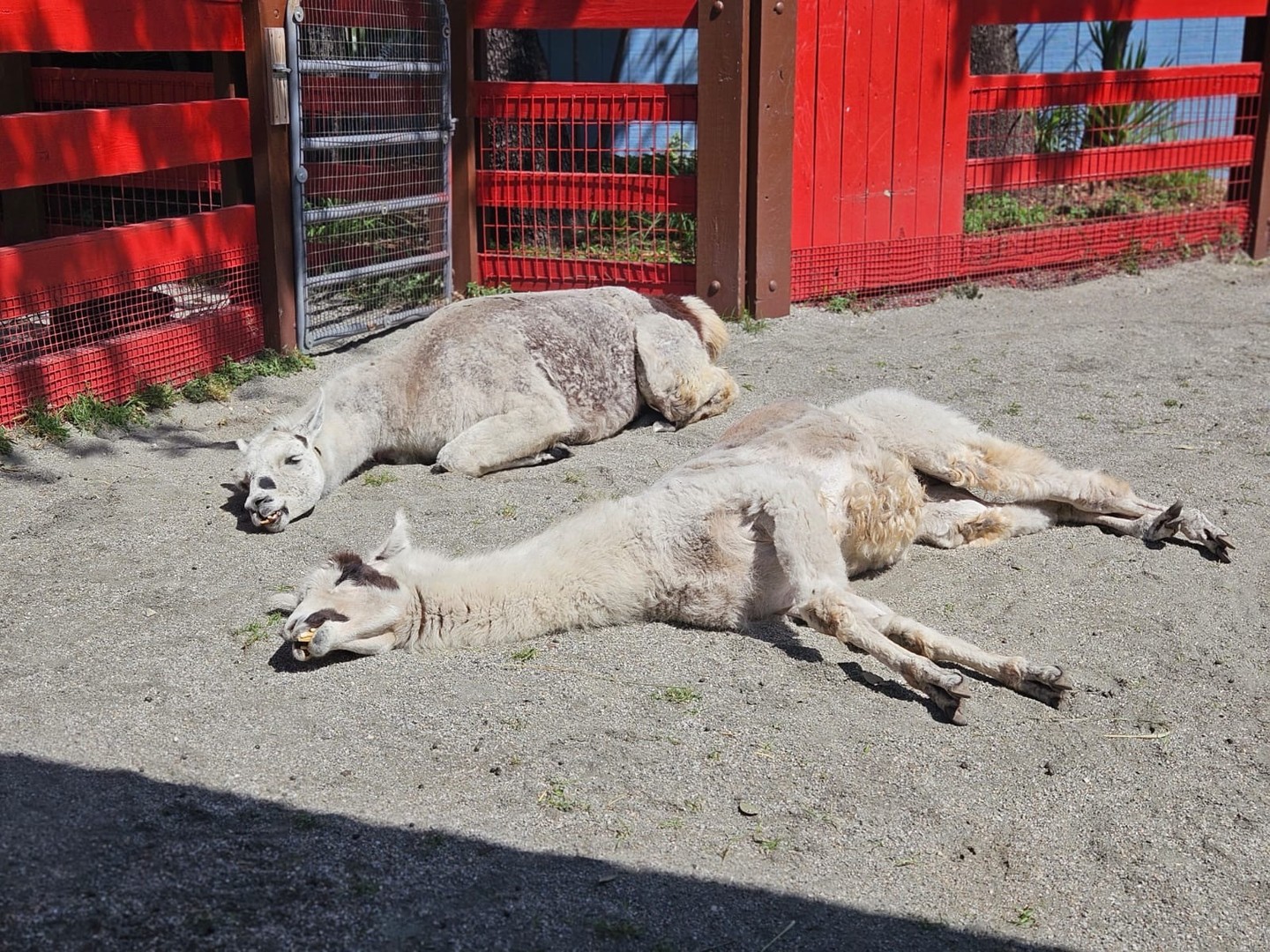- Understanding Llama Behavior and Adaptation to the Florida Climate
- The Role of Enrichment and Welfare in Zoo Management
- Educational Impact of Llamas in Zoos for Visitors
- Wildlife Conservation Efforts and the Importance of Llamas
- How Llamas Help Foster a Connection with Nature and Promote Environmental Awareness
Llamas: Adaptation and Behavior in Sunny Florida
Llamas, native to the Andes, have captivating behaviors that often surprise and amuse zoo visitors. When guests see Swabby and Angie lounging in the sun, seemingly "melting," they might worry about their well-being. However, this behavior is a delightful adaptation. In their high-altitude native habitat, llamas have developed thick coats that help insulate them from the cold. Under the Florida sun, finding a patch of sunlight becomes their preferred napping spot, simulating their natural basking behavior in the Andes.
Llamas are adept at thermoregulation. Their wool acts as insulation, protecting them from extreme temperatures. In Florida, their relaxed sunbathing appears dramatic but is simply an adaptation to warmth, one they navigate with ease. Understanding these behaviors addresses visitor concerns and emphasizes the adaptability of these animals.
The llamas’ behavior also serves to highlight the importance of habitat adaptation in zoos. By simulating elements of their natural environment, zoos can promote physical and psychological well-being, ensuring animals like Swabby and Angie thrive and entertain with their endearing antics.
Zoo Management: Enrichment and Animal Welfare
Effective zoo management prioritizes animal welfare through enrichment—both psychological and physical. For llamas, this means offering opportunities to engage in natural behaviors like grazing, exploring, and yes, sunbathing. Enrichment activities not only stave off boredom but also encourage the animals’ physical health.
Creating a stimulating environment for llamas includes providing various terrains and vegetation in their enclosures mimicking their native landscapes. Access to sunlit areas helps their natural thermoregulation. Additionally, keeping llamas in social groups mirrors their natural herd dynamics, fostering companionship and reducing stress.
Education is pivotal in zoo management. Staff must learn about individual animal preferences and weather responses, ensuring optimal care. Regular health checks and behavioral observations are integral, identifying any signs of discomfort or illness promptly. Through diligent care, zoos foster the health and happiness of their residents, showcasing llamas’ engaging behaviors to the public.
Educational Significance of Llamas in Zoos
Llamas serve as more than just charming attractions; they are educational ambassadors for wildlife. Visitors learn about their natural history, behaviors, and conservation status. This enriches public understanding, fostering a deeper appreciation for wildlife and environmental stewardship.
Interactive programs and informational displays about llamas provide insights into their habits and significance. By observing Swabby and Angie, visitors grasp concepts like adaptation and ecology. Such experiences inspire curiosity and respect, crucial elements in a society increasingly disconnected from nature.
Educational initiatives often include guided tours, allowing visitors to discuss and explore llama behavior with knowledgeable staff. This hands-on learning deepens engagement, making animal conservation relatable and urgent.
Conserving Wildlife: The Role of Llamas
Involving the public in conservation efforts is enhanced by charismatic megafauna like llamas. Though llamas themselves are domesticated, they represent keystone species that play vital roles in ecosystems. Their grazing patterns help maintain grasslands, preventing overgrowth and supporting biodiversity.
Zoos contribute to conservation through breeding programs and supporting field research. By educating visitors about llamas, zoos highlight the broader challenges of habitat loss and climate change affecting many species globally. Conservation messages become tangible and accessible, encouraging community involvement.
Llamas also symbolize sustainable agricultural practices. In the Andes, their wool, meat, and dung (used as fuel) are crucial resources, demonstrating sustainable living. Highlighting these practices in zoos connects visitors to global conservation efforts, illustrating the interconnectedness of ecosystems and human responsibility.
Fostering a Connection with Nature
Llamas possess an undeniable ability to draw interest and affection from visitors. This connection fosters environmental awareness, as people are more inclined to protect what they love. Observing these gentle creatures bask in the sun encourages reflection on our impact on the environment and the importance of preserving wildlife.
Engagement with llamas provides emotional and cognitive benefits, from stress reduction to enhanced learning. Such interactions can inspire individuals to take personal action for conservation, whether through sustainable lifestyle choices or supporting wildlife initiatives.
Zoos bridge the gap between urban lives and the natural world, using animals as conduits for education and preservation. As people watch Swabby and Angie luxuriate under the sun, they’re reminded of the beauty and complexity of nature, nurturing a commitment to care for our planet’s diverse inhabitants.
In closing, llamas like Swabby and Angie at zoos offer more than entertainment. They are integral to education, conservation, and fostering a deeper connection with the natural world. Through their charming behaviors and interactions with the public, they serve as ambassadors for both their species and the broader message of environmental stewardship. Their presence underlines the essential role zoos play in wildlife conservation and how, with informed care, these institutions support the well-being and education of both animals and humans.
*****
Source Description
Our llamas are melting!! 🫠
Oh, wait, they just enjoy a good nap in the sun! Swabby and Angie are seasoned professionals when it comes to enjoying the Florida sun and startling guests. 🫨 Don’t worry, they are better than okay during nap time!


